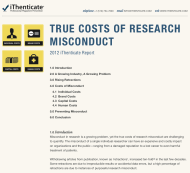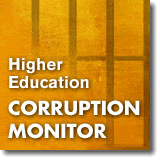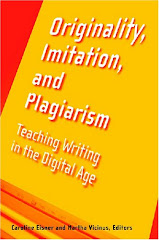By David Cyranoski of Nature magazine
China's roughly 5,300 home-grown journals have been a receptacle for much of the nation's research that has resulted from misconduct
The China Association for Science and Technology (CAST) in Beijing has taken the lead among the country's publishers in trying to clamp down on academic misconduct. This month, it issued a declaration from the 1,050 journals it oversees -- part of increasingly aggressive nationwide efforts to purge China's corpulent scientific publishing industry and bring its home-grown journals, in both English and Chinese, up to international standards.
In the declaration, journal editors in chief and affiliated society presidents commit to following CAST guidelines issued in 2009. The document defines many types of fraud and lists possible penalties for miscreant authors -- from written warnings to blacklisting or informing home institutions and funding agencies about the misconduct. Reviewers who abuse their privilege by, for example, plagiarizing an article, can also face blacklisting and public disclosure.
That is a step in the right direction, says Chun-Hua Yan, associate editor-in-chief of the CAST-administered Journal of Rare Earths, based in Beijing. Yan says that many editors had not been aware that some subtle forms of wrongdoing -- such as favoring papers on the basis of personal relations or offering honorary authorship -- were types of misconduct. "There are some soft or grey areas. These are now more clear to all the editors," he says. Suning You, president of the Chinese Medical Association Publishing House in Beijing, which has 126 journals administered by CAST, agrees. "The declaration will purify the academic environment to create first-class medical journals, thus achieving social and economic benefits," he says.
Clampdown on misconduct
China's academia and government alike have taken measures to curb misconduct in recent years, with institutions such as Zhejiang University in Hangzhou taking the lead (see Nature 481, 134-136; 2012). The CAST declaration itself follows the announcement of rules from China's education ministry that require universities to monitor misconduct closely (see Nature 483, 378-379; 2012).
The country's roughly 5,300 home-grown journals have been a receptacle for much of the research that has resulted from misconduct. Two years ago, the government vowed to get rid of the most problematic publications (see Nature 467, 261; 2010), but that weeding process hasn't happened yet.
Yan says that the latest declaration will put pressure on journals to fall in line. "Many are just commercial journals, just there to make money," he says. "We cannot make an announcement that `these are bad journals' but we can show the right way to publish."
A stronger incentive -- money -- might force the issue. According to Yan, China's finance ministry is starting a program that will spend 100 million renminbi (US$16 million) per year to improve journals. By the end of 2012, a committee will rank the country's publications into three tiers on the basis of their international and Chinese impact factors and other measures of international influence, such as the number of overseas subscriptions and the number of foreign editorial-board members. Journals ranked in the first tier will get a bonus of 100,000 renminbi per year, and those in the second, 50,000 renminbi. Third-tier publications will get nothing.
Yan says that the money could as much as double his journal's current budget, and allow the publication to waive publishing fees for top papers, train young researchers in how to write scientific papers, invite international advisory-board members to China to discuss possible improvements and enhance software for electronic submission and review systems. He hopes that some Chinese-language journals will become internationally relevant, "followed by scientists around the world".
But there are skeptics. Cong Cao, a science-policy researcher specializing in China at the University of Nottingham, UK, says that neither the extra funding nor the editors' declaration will have much of an impact. China's 5,300 journals account for roughly one-third of the world's science and technology journals and, by Cao's estimate, publish around 600,000 papers per year. That, he says, "represents a huge business". The journals attract "those who have to fill institutionally set publication requirements", adds Cao. "The real question that China's scientific leadership as well as scientific publishers have to consider is: does China really need that many journals in the first place?"
This article is reproduced with permission from the magazine Nature. The article was first published on April 25, 2012.








No comments:
Post a Comment